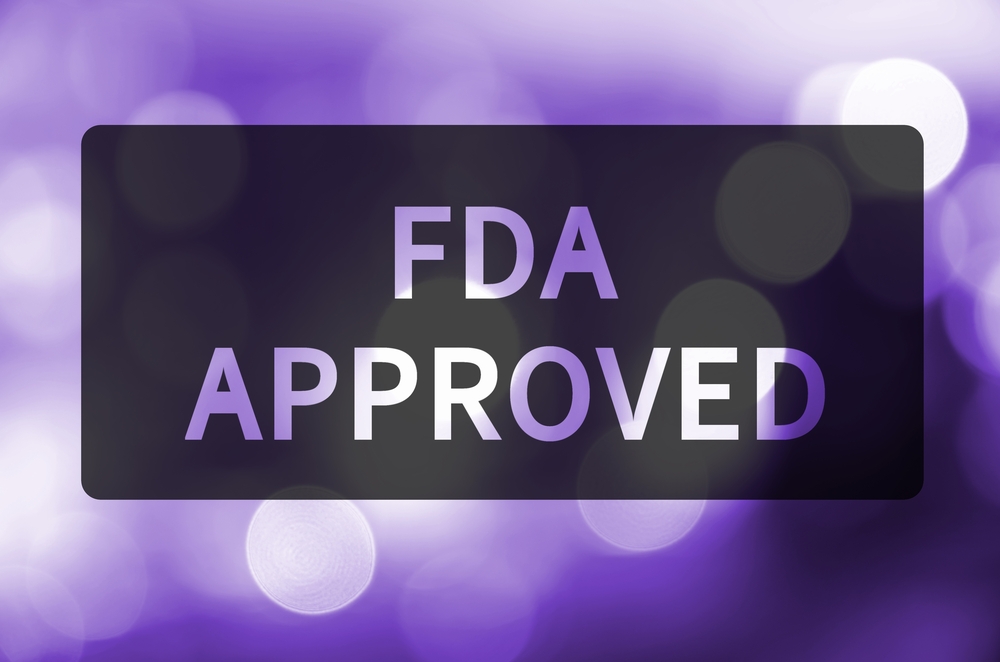FDA Approves Novartis’ Adakveo, 1st Treatment for Pain Crises in Teens and Adults with SCD
Written by |

A first targeted treatment for sickle cell disease (SCD) — Adakveo (crizanlizumab), by Novartis, that works to lower the frequency of the painful vaso-occlusive crises (VOCs) common in this disease — has been approved by the U.S. Food and Drug Administration (FDA).
Adakveo is indicated to treat adults and adolescents, starting at age 16, and should soon be available to patients in the U.S., Novartis said in its press release.
“Patients with sickle cell disease often face unique challenges, and have long suffered silently through unimaginable pain crises,” said Beverley Francis-Gibson, president and CEO of the Sickle Cell Disease Association of America. “We are excited to have a new medicine that may help many of the thousands of people.”
A monoclonal antibody, Adakveo works by binding and blocking the activity of P-selectin, a protein found on the surface of endothelial cells that make up the lining of blood vessels.
In SCD, P-selectin promotes the sticking of sickle-shaped red blood cells to each other and to the walls of blood vessels, obstructing the vessels and increasing the risk of VOCs. By inhibiting the activity of P-selectin, Adakveo helps to stop red blood cells from adhering to blood vessel walls, allowing for better blood flow and working to prevent inflammation and pain.
“Adakveo is the first targeted therapy approved for sickle cell disease, specifically inhibiting selectin, a substance that contributes to cells sticking together and leads to vaso-occlusive crisis,” Richard Pazdur, MD, director of the Oncology Center of Excellence and acting director of the Office of Oncologic Diseases in the Center for Drug Evaluation and Research, said in an agency press release.
“Vaso-occlusive crisis can be extremely painful and is a frequent reason for emergency department visits and hospitalization for patients with sickle cell disease,” Pazdur added.
The FDA’s approval decision was based on data from the randomized, double-blind, and placebo-controlled Phase 2 SUSTAIN (NCT01895361) trial in 198 SCD patients with a history of frequent VOCs (two to 10 episodes the year prior to enrolling in the study).
Enrolled patients, ages 16 and older, were randomly assigned either to an intravenous infusion of Adakveo at one of two doses (2.5 mg/kg or 5 mg/kg) or to a placebo every other week for the first weeks, and then every four weeks over about one year of treatment.
The study’s main goal was to evaluate the impact of treatment on the frequency of annual VOCs requiring a visit to a medical facility and treatment with either opioids or nonsteroidal anti-inflammatory drugs (NSAIDs) to control pain.
Key secondary goals included the number of days patients remained hospitalized due to VOCs within a year, and the time until participants experienced a first VOC as well as the percentage without any VOCs throughout the study.
Findings from SUSTAIN demonstrated that Adakveo significantly reduced the frequency of annual VOCs by 45% compared to placebo (1.63 versus 2.98) at the 5 mg/kg dose. Reductions in annual VOCs were observed in all treated patients, regardless of the type of mutations they carried or prior treatment with hydroxyurea.
Adakveo’s use also reduced the number of days patients remained hospitalized due to VOCs, by 42% compared to the placebo; a median of 4.0 days that year for the 67 patients treated with Adakveo at 5 mg/kg, and 6.87 days/year for those given a placebo.
A greater expanse of time until a first pain crisis was also seen in treated patients against placebo, 4.1 months vs. 1.4 months, and 36% of those given Adakveo had no VOC during the study compared to 17% of those on placebo, again at the 5 mg/kg dose, which is now the recommended dose.
The most common side effects of treatment included joint pain (18%), nausea (18%), back pain (15%), and fever (11%).
Novatis put Adakveo’s wholesale list price at$ $2,357 a vial, and estimates are that most patients will need three or four vials for each month’s treatment. That puts the therapy’s list price, which patients typically do not pay, at $7,071 to $9,428 per month or between $84,852 and $113,135 each year.
An open-label Phase 2 trial (NCT03474965) of crizanlizumab in up to 100 children with sickle cell disease who have at least one VOC in the past year is now recruiting infants and children, starting at age 6 months, at sites in the U.S., Canada, Europe, and elsewhere. This trial’s purpose is to find an appropriate dose for pediatric patients; study site and contact information can be found here.
“We know this drug can decrease the frequency of sickle cell pain crises in a significant and clinically meaningful way,” Kenneth Ataga, MD, director of the Center for Sickle Cell Disease at the University of Tennessee Health Science Center, and principal investigator of the SUSTAIN trial, said in Novartis’ release. “The approval of crizanlizumab is an important advancement for people living with this very difficult condition.”
Adakveo’s recommended dosing is 5 mg/kg by intravenous infusion over a period of 30 minutes for a first infusion and again two weeks later, then once every four weeks thereafter. Full prescribing information for Adakveo, including recommended dosing schedules and safety warnings, can be found here.
The FDA previously granted Adakveo orphan drug and breakthrough therapy status, and its approval review was given priority. The agency announced its decision two months ahead of its priority review action date, allowing SCD patients in the U.S. to have access to the medication sooner.
“The approval of Adakveo marks a new era in the treatment of sickle cell disease, a genetic condition that places an extraordinary burden of unpredictable pain crises on patients and their families,” said Susanne Schaffert, PhD, president of Novartis Oncology.
“The stories we have heard from patients about their sickle cell pain crises are devastating,” Schaffert added. “We are pleased to help reimagine medicine together with the sickle cell community and offer new hope for fewer VOCs.”





